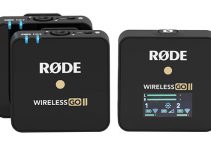Sony’s recently released 4K Super 35mm sensor XDCAM camera the PXW-FS7 is not only an extraordinary 4K camera, considering the price and all the features it provides, but as we’ve already covered in previous posts, the FS7 can produce exceptional images as well, especially in the hands of experienced DP’s such as the Emmy award-winning cinematographer Rick Macomber and his collaborator Paul Antico.
Both team up to produce a short test film using the FS7 and managed to pull off the whole shoot for less than an hour using only the available light. Before we delve into the technical stuff and specifications, let’s see the final result the team came up with first.
Snowlight (An FS7 Camera Test Film) from Anticipate Media on Vimeo.
The video was shot primarily at 4K (Ultra HD), 60fps, using the XAVC-Intra codec at 600Mbit 4:2:2 10bit. The camera was set to shoot Slog3 gamma in Custom mode, with noise reduction set to medium. The lens was a Canon 24-105L F4 IS lens on a Metabones Ultra Speedbooster adapter.
The final drone shot was taken with a GoPro Hero 4 Black camera mounted to a DJI Phantom 2 drone on an H3-3D gimbal. “Snowlight” was edited and graded in FCPX using FilmConvert. Rick and Paul were impressed by the extremely light and reasonably balanced body of the FS7. With its dust resistant buttons and magnesium body panels both confirm that the cameras are on par with the Canon C300.
However, they also found some drawbacks such as the poor performance of the EVF loupe and the inability to shoot with a View Finder LUT and keep the waveform on the screen, due to FS-7’s firmware limitations. They also discovered that without a LUT it was extremely tough to judge critical focus compared to the Canon C300 C-Log mode where the process is much easier.
Considering the image quality, the above frame grab solely speaks for itself. As to dynamic range, the roll off in the highlight, the skin tones, the details and everything in between, again it simply looks perfect, at least, to me. Due to the FS7’s XAVC-Intra 422 10-bit codec’s strengths, the footage can be manipulated and pushed in almost all directions without any risk of it falling apart, free of poor codec artefacts such as banding and false colours. It’s not 4K Raw, but it is enough to keep you busy in the grading suite.
Paul Antico also claims that in terms of low light capabilities the FS-7 could be compared to Canon C300 performance as well.
The C300 can go much higher in ISO (80,000 vs 16,000 on the FS7), but the noise is far worse and filled with color the higher you go. The FS7 is overall cleaner using the same ISO settings.
Ultimately, if you are in the market for a professional and relatively affordable 4K camera and want to have many more colour options in post, and potentially a wider client base, the FS7 is “an excellent (relatively) budget choice for anything but the highest-end productions”, indeed. However, it doesn’t mean you should overlook your old and well-trusted C100 or C300 as both cameras have their strengths and weaknesses, and the FS7 included.
If you want, you can find more detailed information about the shoot, set up and post-production of “Snowlight” here.
Disclaimer: As an Amazon Associate partner and participant in B&H and Adorama Affiliate programmes, we earn a small comission from each purchase made through the affiliate links listed above at no additional cost to you.



